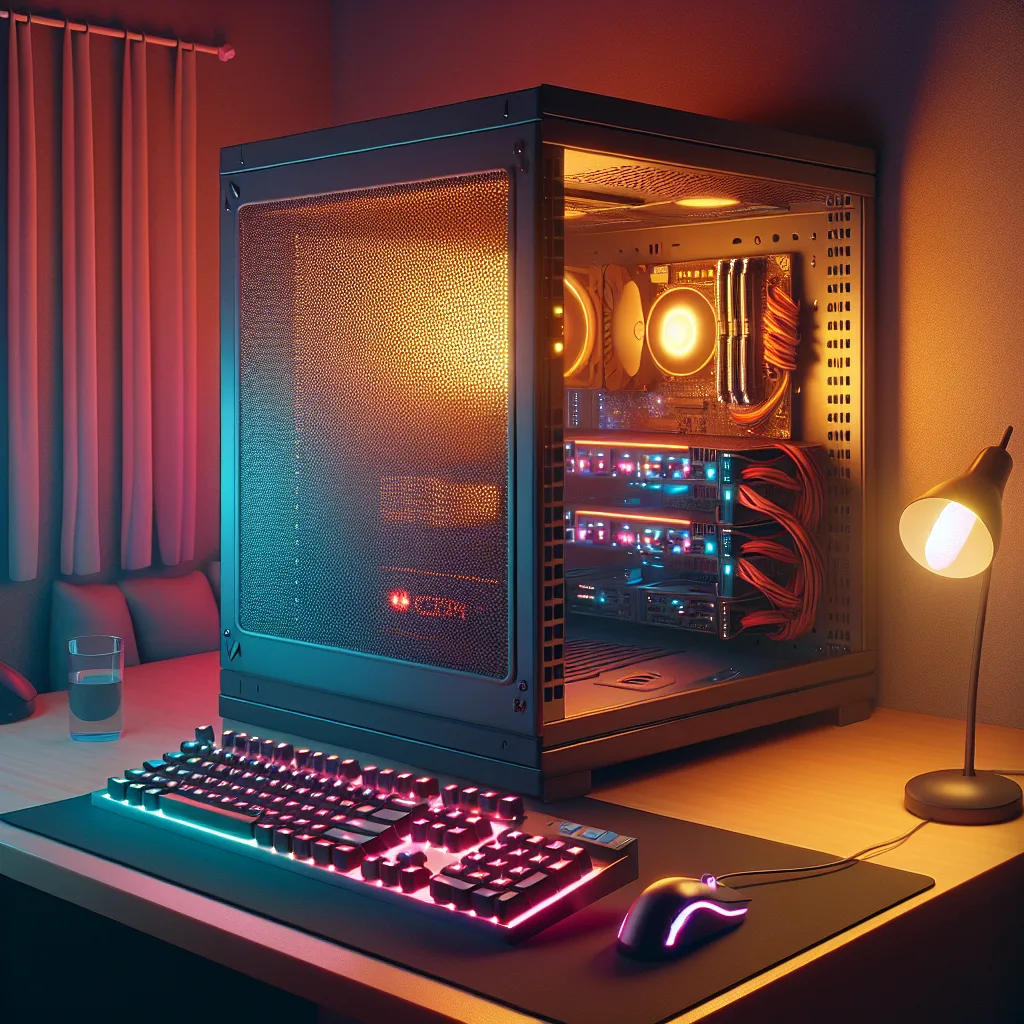Ever find a cheap server online and dream of building a powerful gaming rig? Let’s talk about the pros, cons, and the reality of that tempting DIY project.
You know the feeling. It’s late, you’re scrolling through eBay, Facebook Marketplace, or some other digital bazaar of forgotten things. You’re not looking for anything in particular. And then, you see it.
For me, it was a server. Not just any server, but a hulking, industrial, multi-bay server chassis. The kind of thing you’d expect to see bolted into a rack in a freezing-cold data center, blinking away silently as it powers a whole company.
And it was cheap. Crazy cheap.
My first thought wasn’t about running a business website or managing databases. No. My first thought was, “Imagine building a gaming rig in that.”
The Dream of a Ridiculous-Box
My mind immediately started racing. I wasn’t just thinking of a PC; I was thinking of a home data-center. This wouldn’t be just for gaming. Oh no.
It would be the ultimate all-in-one machine.
* A powerful gaming server, capable of running anything I throw at it.
* A Plex server that could stream 4K movies to every device in the house without breaking a sweat.
* A private cloud for all my files, photos, and projects.
* A host for a few private game servers for me and my friends.
The possibilities felt endless. It was a tech enthusiast’s dream project. The satisfaction of taking this piece of industrial hardware and taming it, making it the heart of my home network… it was a powerful fantasy.
The price tag made it all the more tempting. For less than the cost of a high-end gaming case, I could get this behemoth. It felt like a loophole, a secret I had stumbled upon that no one else knew. All that potential, just sitting there waiting for me.
My brain was already in build-mode. I was picturing the components, planning the cable management, imagining the satisfying thunk of the hard drive bays sliding into place.
But Then, a Little Voice of Reason Chimes In
Just as I was about to click “Add to Cart,” a small, nagging voice in the back of my head decided to speak up. It started asking some very inconvenient questions.
“Where are you going to put this thing?”
Good point. This isn’t a sleek tower that can be tucked under a desk. It’s a massive, heavy metal box. It belongs in a rack, in a basement, or a garage. My small home office would suddenly feel like a server room, and not in a cool, aesthetic way.
“Have you thought about the noise?”
Server hardware is designed for one thing: performance and cooling in a room where nobody has to listen to it. The fans inside these things aren’t the whisper-quiet, RGB-lit fans from the consumer market. They are jet engines. They are designed to move as much air as possible, and they don’t care about your ears. The dream of a quiet evening of gaming would be replaced by a constant, high-pitched WHIRRRRR.
“And the power bill?”
That cheap initial price is a bit of a Trojan horse. Server components, especially older ones, are not known for their energy efficiency. Running a machine like this 24/7 could have a very real, very noticeable impact on my monthly electricity bill. The “crazy cheap” server suddenly doesn’t seem so cheap when you factor in its running costs over a year.
“Will your stuff even fit?”
Server chassis are built for server motherboards and server components. They have different layouts, different mounting points, and different priorities. Would my consumer-grade motherboard fit? What about my giant, triple-fan graphics card? Would I spend half the project just trying to dremel and drill new holes to make everything compatible? The fun DIY project could quickly turn into a frustrating nightmare of incompatibility.
So, What’s the Verdict?
After my internal debate, I closed the browser tab. For now.
The truth is, the allure of a project like this is undeniable. It’s not just about the end result; it’s about the challenge, the learning process, and the story you get to tell afterward. It’s the modern-day equivalent of finding an old car in a barn and spending weekends bringing it back to life.
But it’s also important to be realistic. It’s a project that demands space, patience, and a tolerance for noise and high power bills. For most of us, a powerful desktop PC and a separate, dedicated NAS (Network Attached Storage) device is a much more practical—and quieter—solution.
I still think about that server sometimes. I still wonder, “What if?” And maybe one day, if I have a house with a garage or a basement where I can let a jet engine run, I’ll go for it.
Until then, it remains a fun, ridiculous dream. And sometimes, the dream is just as good as the real thing. What’s the one impractical tech project you can’t stop thinking about?
